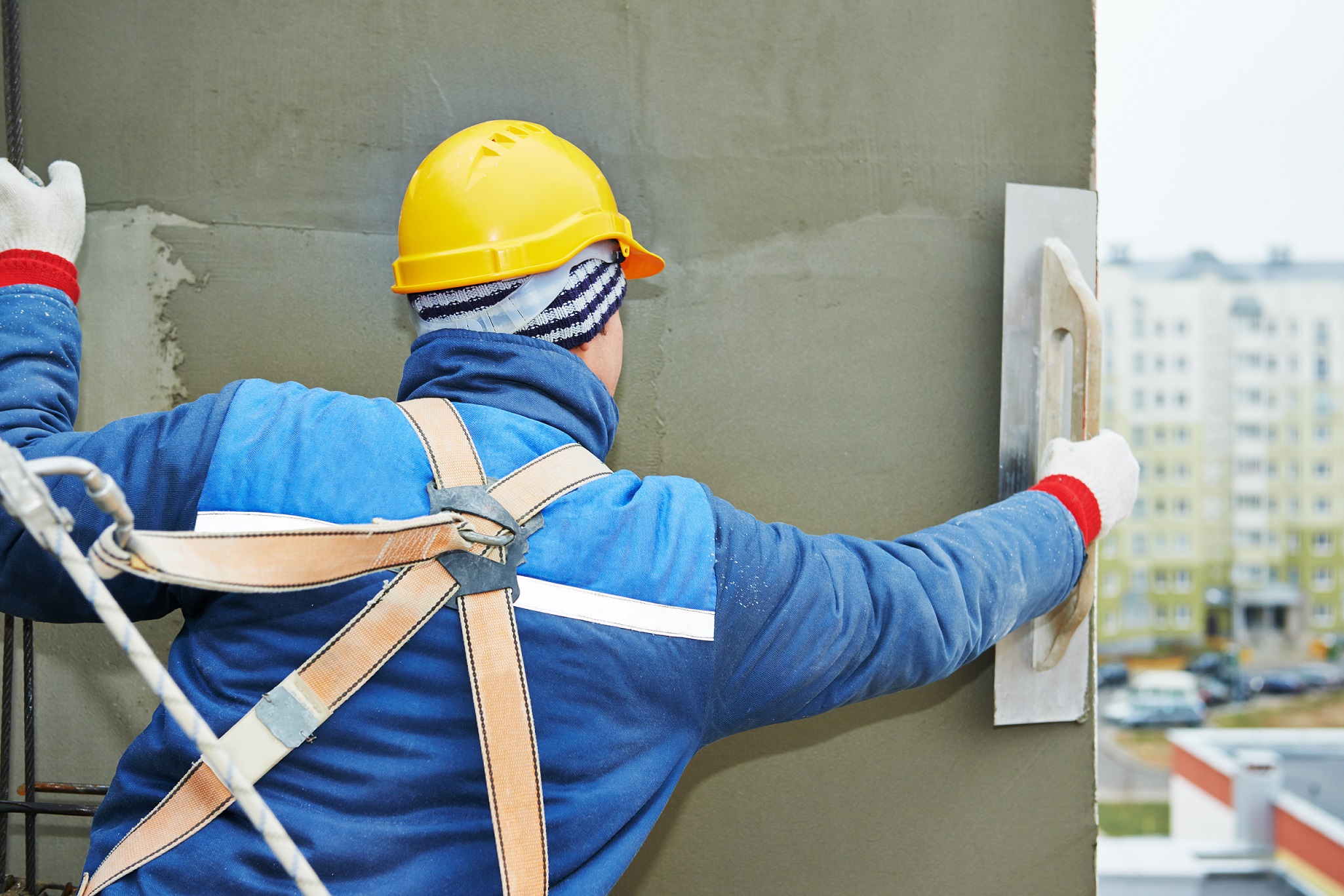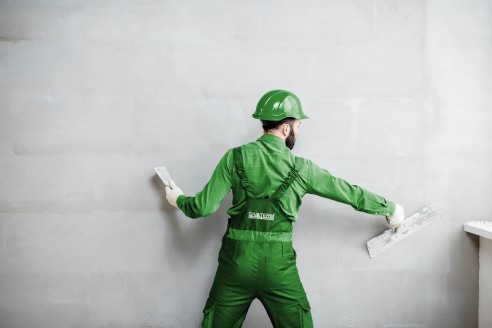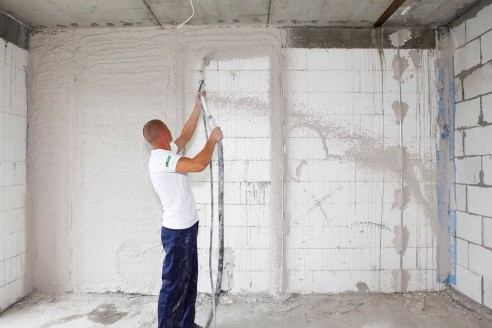
All kinds of coating process made from the exterior for the purpose of thermal insulation of buildings is called sheathing. It is thought that the exterior cladding made with only foam plates or rock wool plates is sheathing among the people. Contrary to popular belief, exterior cladding with natural thermal plaster, which can be used instead of these plates, is also a sheathing.
Sheathing materials should be compatible with the texture of the building material and human health. Thermoplastic petroleum-derived foam boards are not compatible with the texture of building materials. Therefore, their lifespan is short, and these materials are harmful to human health because they do not breathe and are flammable. In the plate sheathing system, the plates are attached to the surface by drilling holes with approximately 8-10 dowels, these holes will damage your building.
In addition, since heat leaks occur from these holes and the joints between the plates, the thermal insulation performance is seriously affected.
In the plastered jacketing system, the thermal plaster adheres to the surface, so there is no need for holes and dowels, there is no need for any joints, and it covers the surface to be thermally insulated as a whole, so heat leaks do not occur and thermal insulation performance is very high.
The composition of the Natural Thermal plaster consists of fully expanded and fired natural minerals. Therefore, it is compatible with the texture of construction materials and is long-lasting. There is no petroleum-derived chemical carcinogenic raw material in its composition. Thermal plaster breathes thanks to its porous structure, does not form rotten bacteria, and also does not burn or ignite in any way, so Thermal plasters are always the most successful products for human health and safety.
Materials that are not dimensionally stable change shape over time, materials that melt, rot, shrink, hang and change shape over time due to exterior conditions lose their thermal insulation function and cause visual disturbances on the exterior of the building. Natural thermal plaster produced from natural materials has dimensional stability, from the moment it is made, its shapes remain the same for a lifetime without melting or rotting. This ensures that the thermal insulation performance lasts a lifetime from the moment it is made. Sustainability is very important in thermal insulation. Sheathing materials produced with natural raw materials provide thermal insulation without decomposition for a lifetime.
While additional plaster is required under the plates in plate systems such as EPS, rock wool, sheathing process can be done in thermal plaster without the need for additional plaster or glaze plaster. This saves labor and cost. In this respect, SIVATERM thermal insulation plaster is economical.
While 15-16kg weight is gained per square meter in plate sheathing systems, 7-8kg weight is gained per square meter in thermal plaster, thus the earthquake resistance of buildings is better preserved than plated systems. Since no additional materials such as holes, dowels and screws are used in thermal plaster, the foundations and columns of the buildings are not damaged.
Another advantage of thermal plaster over other systems is that it prevents moisture, humidity, mold and bacteria formation on the surfaces it is applied to, as it is a breathing material. It prevents the spread of diseases in public places.
Minerals in thermal plaster have the feature of absorbing radioactive waves. Radioactive waves have negative effects on people's health. All electronic devices such as televisions, radios and refrigerators in our homes emit radioactive radiation. These radiations are absorbed and damped by the elements in the heat insulation plaster, if they are not absorbed and extinguished, these radiations are reflected back to people, which causes various nervous system disorders. SIVATERM thermal insulation plaster prevents this situation thanks to its radioactive absorbing feature.
 Benefits of Thermal Insulation
Benefits of Thermal Insulation Thermal insulation is the process of heat transfer between insulating material and materials in contact with heat. Thermal insulation is measured by thermal conductivity. Low thermal conductivity materials are used for thermal insulation. In addition to thermal conductivity, density and heat capacity are also important properties of insulation materials.For thermal insulation, heat flow through the insulation material must be resisted. Therefore, the insulating material working as an i
 Exterior Sheathing Prices
Exterior Sheathing Prices In recent years, there has been a serious increase in the number of buildings benefiting from the application of exterior sheathing, together with the increasing energy costs and the support and obligations of the state in terms of insulation. Although this mobility in the sector was reflected positively on the prices at first, the fluctuations in the foreign currency caused the prices to increase again.While calculating the exterior sheathing prices, the main cost is labor and materia
 Importance of Internal Insulation
Importance of Internal Insulation Insulation in buildings can be done both inside and outside. As it is known, the application we call sheathing is the name given to the insulation made from the outside. It is even sometimes called exterior cladding or exterior sheathing. The biggest reason why the sheathing is done only from the outside is that the old type classical insulation materials contain carcinogenic substances because they are petroleum derivatives. Moreover, these materials are quite unstable. The last layer of pla
.jpg) Thermal Insulation with Plaster
Thermal Insulation with Plaster Thermal insulation plasters, sheathing and insulation applications continue to increase day by day. In other words, insulation plasters are becoming more and more preferred products and their name is announced to more users. The fact that the users state that they are very satisfied with the thermal insulation plaster also increases the reliability of these materials.On the other hand, despite the increasing usage rate and positive feedback, there are those who look at thermal insulati
 Advantages of Using Thermal Insulation Plaster in Sheathing
Advantages of Using Thermal Insulation Plaster in Sheathing Sheathing is the covering of buildings with materials that provide thermal insulation from the outside. This process has taken this name because it resembles the process of dressing to protect our body in the cold of winter. In other words, when we say sheathing with thermal insulation plaster, we mean covering the building with thermal insulation plaster. The aim here is to make the interior of the building, namely our living spaces, least affected by the weather conditions outside. In this